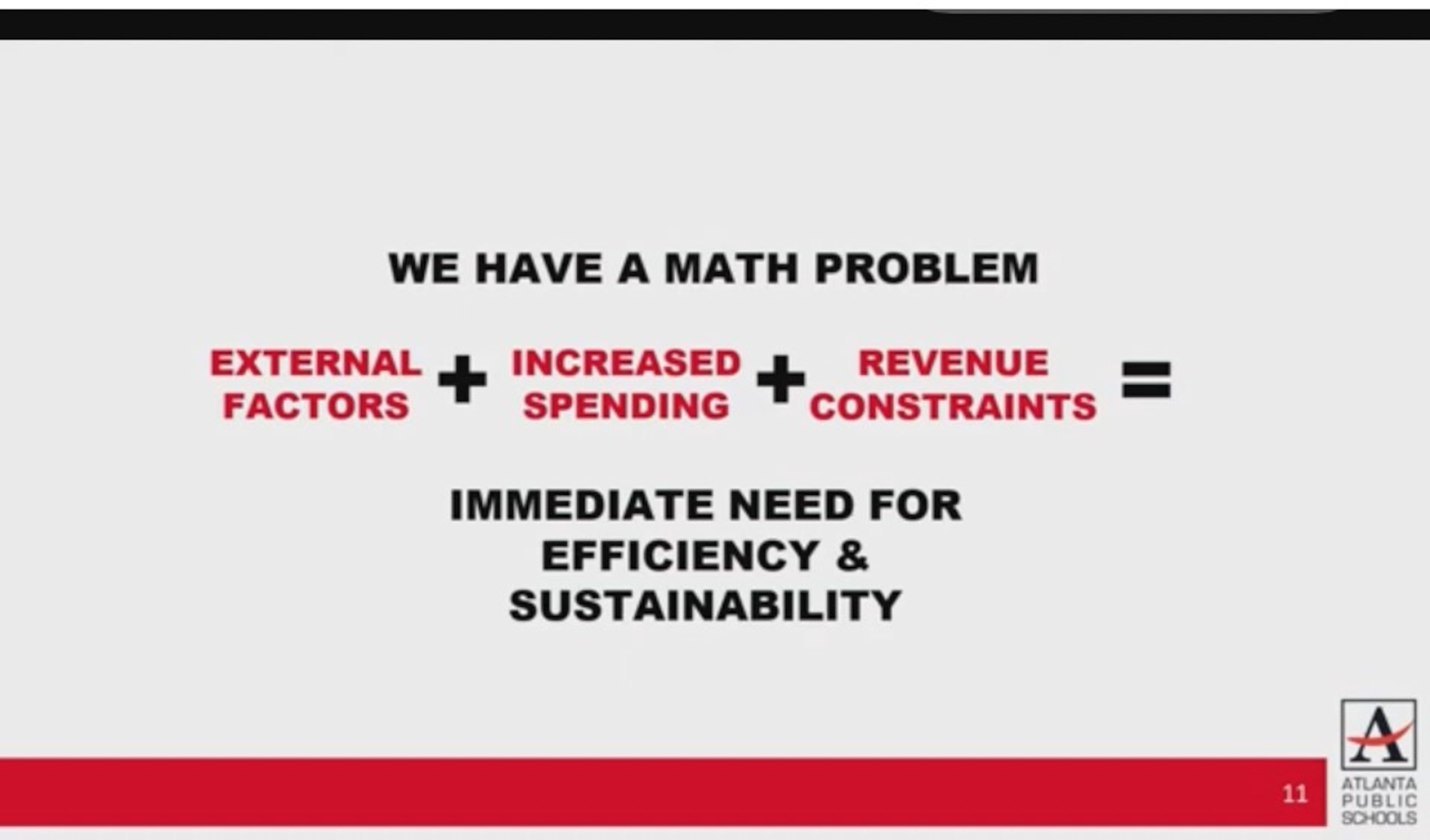Mayor Dickens big plan would ultimately cost taxpayers more
Atlanta Mayor Andre Dickens wants to attack poverty. He wants to burnish his legacy. He wants a big piggy bank at his disposal so he can do stuff.
And it will be expensive, probably even costing city residents a hefty tax increase.
Good thing — for him — he’s not facing serious opposition in this year’s election.
Dickens recently announced he wants to extend the city’s tax allocation districts (TADs) to fund revitalization in neighborhoods that have historically lagged behind. He wants to build affordable housing and improve transit.
Extending the TADs would free up $5 billion (with a “B”) over the next couple decades for Atlanta mayors, not just him, to accomplish great things without repeatedly going back to the pesky City Council for approval.
Instead, the money would be spent through Invest Atlanta, the city’s development arm run by appointed board members, who are better at doing what they’re told.
The mayor’s Chief of Staff Courtney English spelled out the effort at a recent forum.
It would be used, he said, to correct “100 years of divestment ... 100 years of communities being starved of amenities.”
The new money would help bring these neighborhoods up in the world, he said.
“This is something happening on our watch and we can do something about it, because we have these types of tools that don’t cost anybody anything,” English told the crowd. “They don’t divert money. They don’t raise taxes on anybody.”
It sounds rosy but ...
It’s not really correct to say these tools “don’t cost anybody anything.”
Just about everything costs somebody something. And this will. It would cost the city future revenue. It would cost Fulton County future revenue and the same for the schools, which are facing their own financial woes.
Let me briefly explain what a TAD is (please stay with me here): When the city designates an area as a tax allocation district, the amount of property taxes generated in that area are frozen and any additional tax revenue coming in is used to build infrastructure in the district.
Generally, such a tax scheme is employed in areas needing some TLC.
The Beltline was once such an area. It used to be a weedy mess bordered by dilapidated warehouses. But now that it’s booming, the extra tax revenue being generated isn’t going to general city services like cops and firefighting and roads. The extra revenue is used to fix up that area.
In 2030, the Beltline’s TAD expires and that money would go back into the city’s general till.
In June, the mayor told the Saporta Report a tax increase is coming in the near future. Extending the TADs would make it certain. And larger.
Dickens is focused on areas, primarily on the south and west sides, that need extra help — communities that haven’t been booming like the Beltline.
Now, here’s the rub. Like I said before, that money for his plan doesn’t just magically appear. It comes from someone else.
Atlanta Public Schools, which themselves spend lots of money ($1.84 billion overall this year), would be owed about $2.5 billion of those future taxes that Dickens wants to control. The schools have been anxiously waiting for those TADs to sunset so more money will come to them.
The school system currently participates in eight TADS with the city and is forgoing $87 million this year. In the future, that amount will certainly grow.
Atlanta and Fulton would forgo the other $2.5 billion, with the city’s portion a bit bigger than the county’s.
It’s one thing for the city officials to postpone future earnings because they’d be the ones using the money. The schools? Not not so much.
At a recent Atlanta Public Schools meeting, Chief Financial Officer Lisa Bracken laid out a sober future, with a PowerPoint presentation saying, “We have a math problem.”
Yes, students at APS largely don’t do math well, but they are improving.
No, the CFO was saying that the district’s financial math is dire and threatens to get much worse. Costs are up, enrollment is down and the feds likely won’t be helping out like they once did.
“This is creating an instability that is a pressure for the district,” Bracken said.
In all, that means deficits, cuts and closing schools. Bracken noted that cutting 150 positions from the central office saved APS $70 million.

However, that was offset by teacher raises and the district aims to have the average teacher making $100,000 a year by 2030. That would be the highest in metro Atlanta.
The idea is that teachers are in demand everywhere and teaching in Atlanta is often more difficult, so APS must pay a premium to keep them from fleeing.
On top of that, APS is sitting on perhaps 20,000 empty seats.
The district once had 60,000 students but now has 49,400 and with charter schools and other school configurations, only 37,000 students attend the district’s traditional schools.
I asked the mayor’s office a few questions and didn’t hear back directly. Hours later, a group called Atlantans For Safety sent out a press release Thursday afternoon saying TADs are a necessary redevelopment tool, they don’t raise taxes and “APS Already Receiving $100 Million in Lifespan of Beltline TAD.”
“TADs are vital for Atlanta’s future and help create healthier neighborhoods, grow economic development and jobs, build affordable housing, enhance quality education, and increase our investment in kids,” the email says.
Katie Howard, chair of the APS board’s budget commission, told me the district has been talking with the mayor, but the schools face their own problems.
“He’s talking about the things he needs to talk about and we are focused on what we have to,” she said.
“We need the money due for our system and invest it as best we can,” Howard said. “We need that money. Costs are going to increase.”
The school board will ultimately have to vote to go along with Dickens’ plan, as would Fulton County’s board.
Snowball’s chance, I’d wager.


